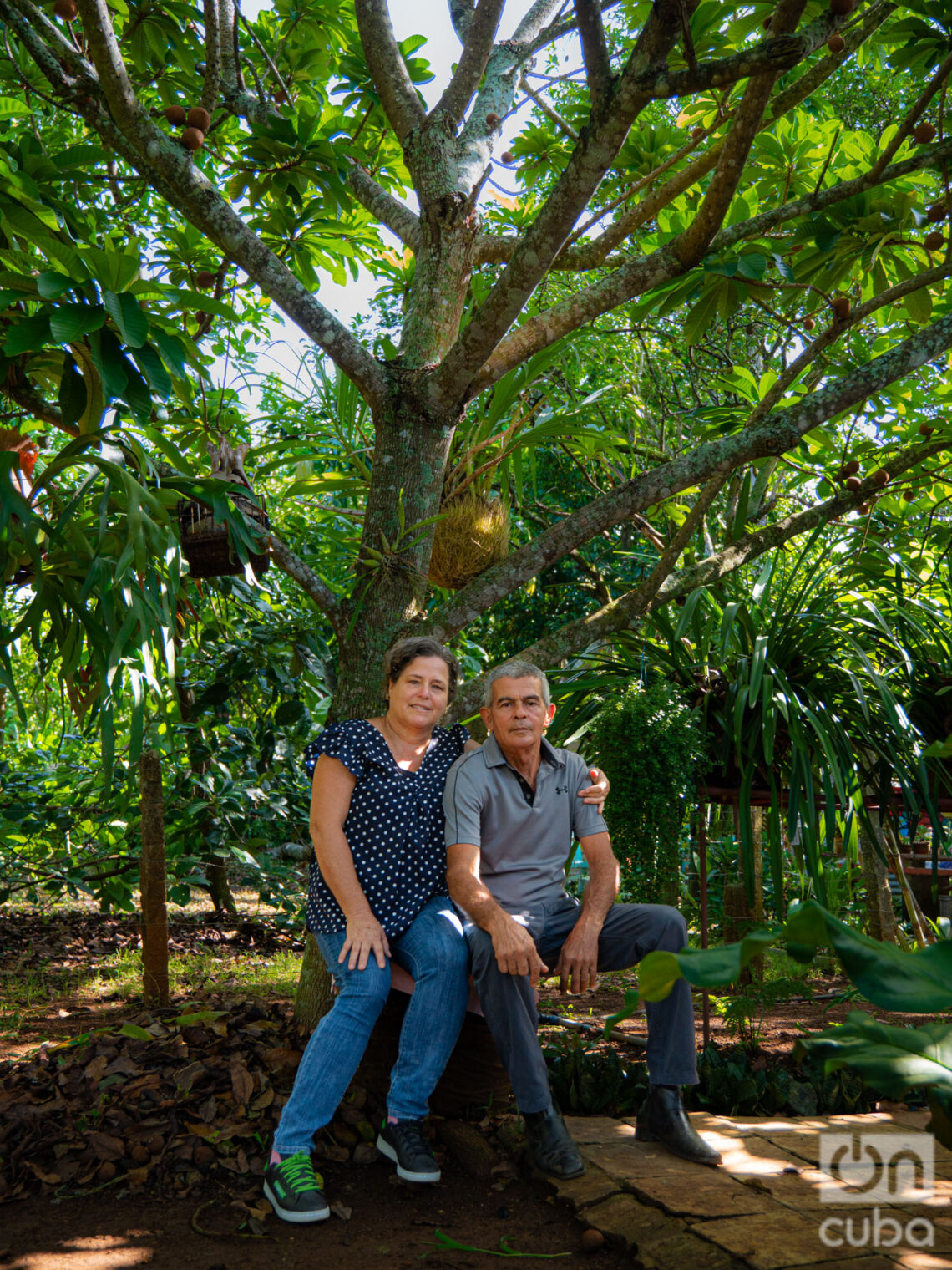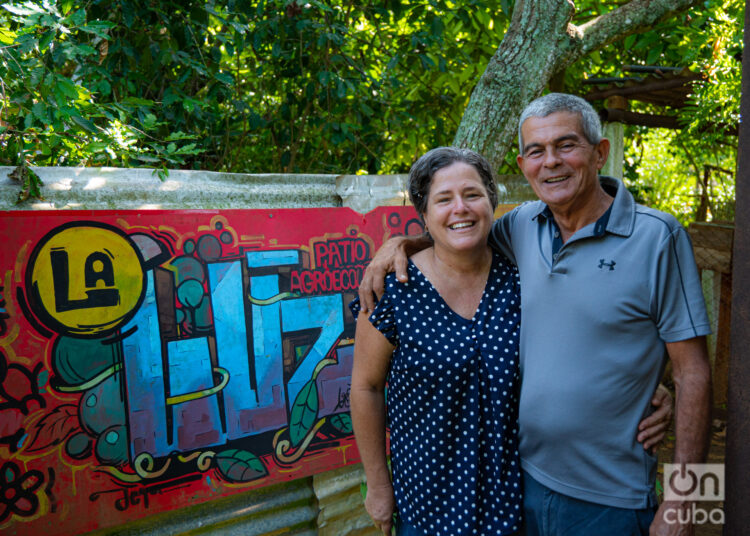The area’s old people say that this place was called Finca Cementerio because there was a slave cemetery. With the triumph of the Revolution, the Indio Hatuey Experimental Station for Pastures and Forages was built around the little houses of those who lived there. Manuel’s father was one of the farmers who stayed close to the first scientific institution created in Cuba after 1959. Manuel learned from his father the tricks to make plants grow and stayed forever, in love with country life. He specialized in pastures and forages and became an important reference in those parts.
Mildrey arrived there in 1994, as one of the best university students in the country. A year later, she would stay there to work, where she would make a career until today. That veterinary student established herself as a renowned researcher who has traveled to many countries exchanging her knowledge.
Fourteen years ago, Mildrey and Manuel got married. They “got together when they were old,” as people say. Each one with their children and their work and their lives made. Together they decided to create an agroecological space on Manuel’s father’s old farm. The Station had already built the biodigester, but the rest was planted, raised, and built by the couple. Since the land they had was 0.5 hectares, it was not classified as a farm, but as a yard. Taking advantage of that familiar, intimate, and cheerful name, they cultivated a life together.
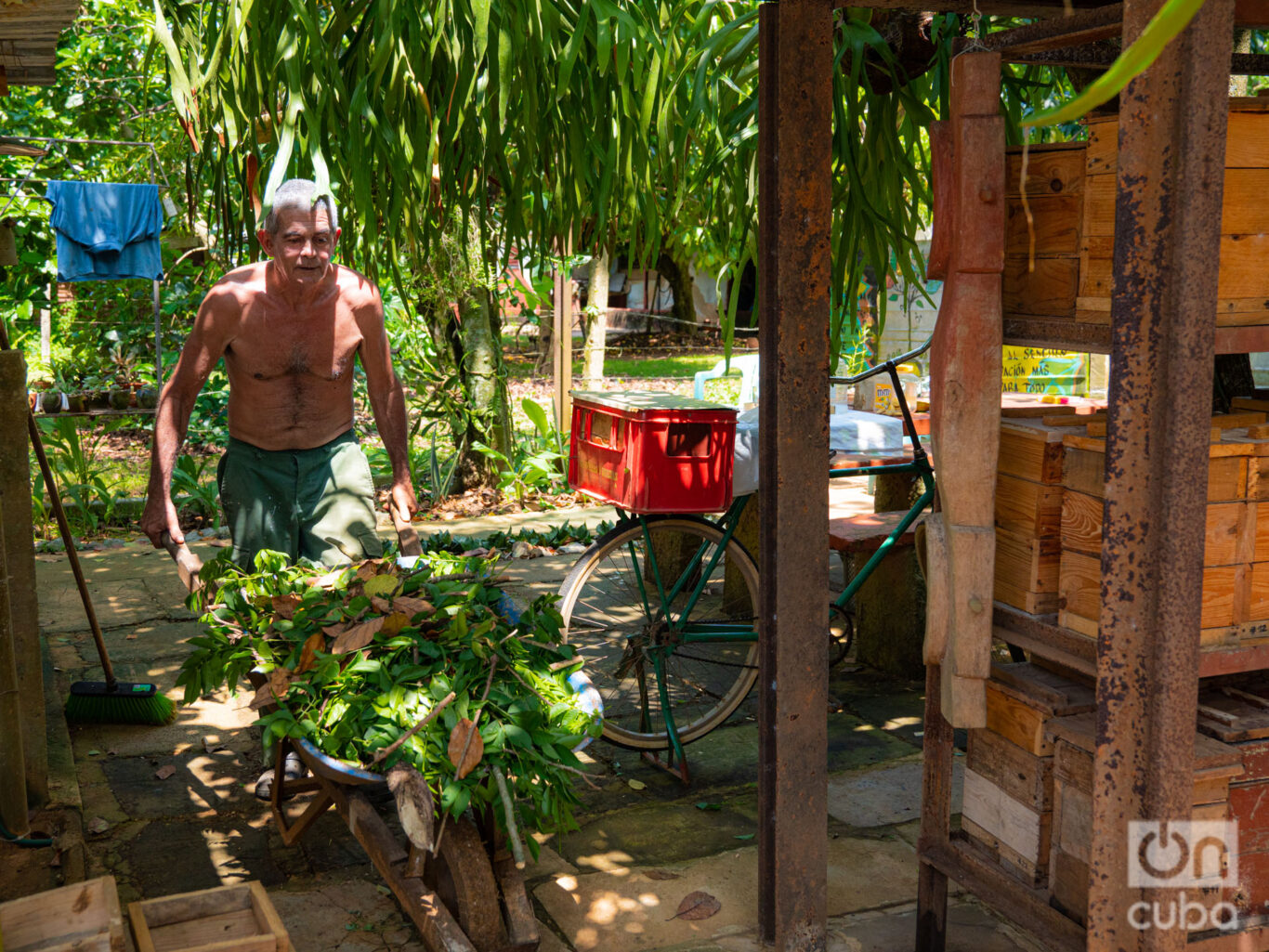
At the La Luz Agroecological Yard, there are trees, lizards, dogs, buttercups, bees, pigs, rabbits, and an orchid garden. By mixing theory and practice, new agroecological techniques, and the ancestral wisdom of country people, they have managed to develop a system of life and food that inspires and surprises those who visit. In a perimeter of only 500 meters, they manage to produce 60% of their daily food. And there is always enough for family members, neighbors and friends. It is wonderful.
The land does not work itself; it takes effort, patience, love, and respect. That is also what their union consists of: working every day with passion.
Mildrey and Manuel have a blackboard in the doorway where they write the list of tasks. They erase the ones they completed and put up new ones. While they finish working on the biodigester, the pig is hungry and the coffee is ready to be picked, the beans are soaking, the guavas are falling off the tree, the bananas are ripening, the flowers are blooming, the dry leaves are piling up, the okra slides down the dry yucca, the bees fill the hives and it rains and clears up and the days go by and the little blackboard of tasks is never empty.
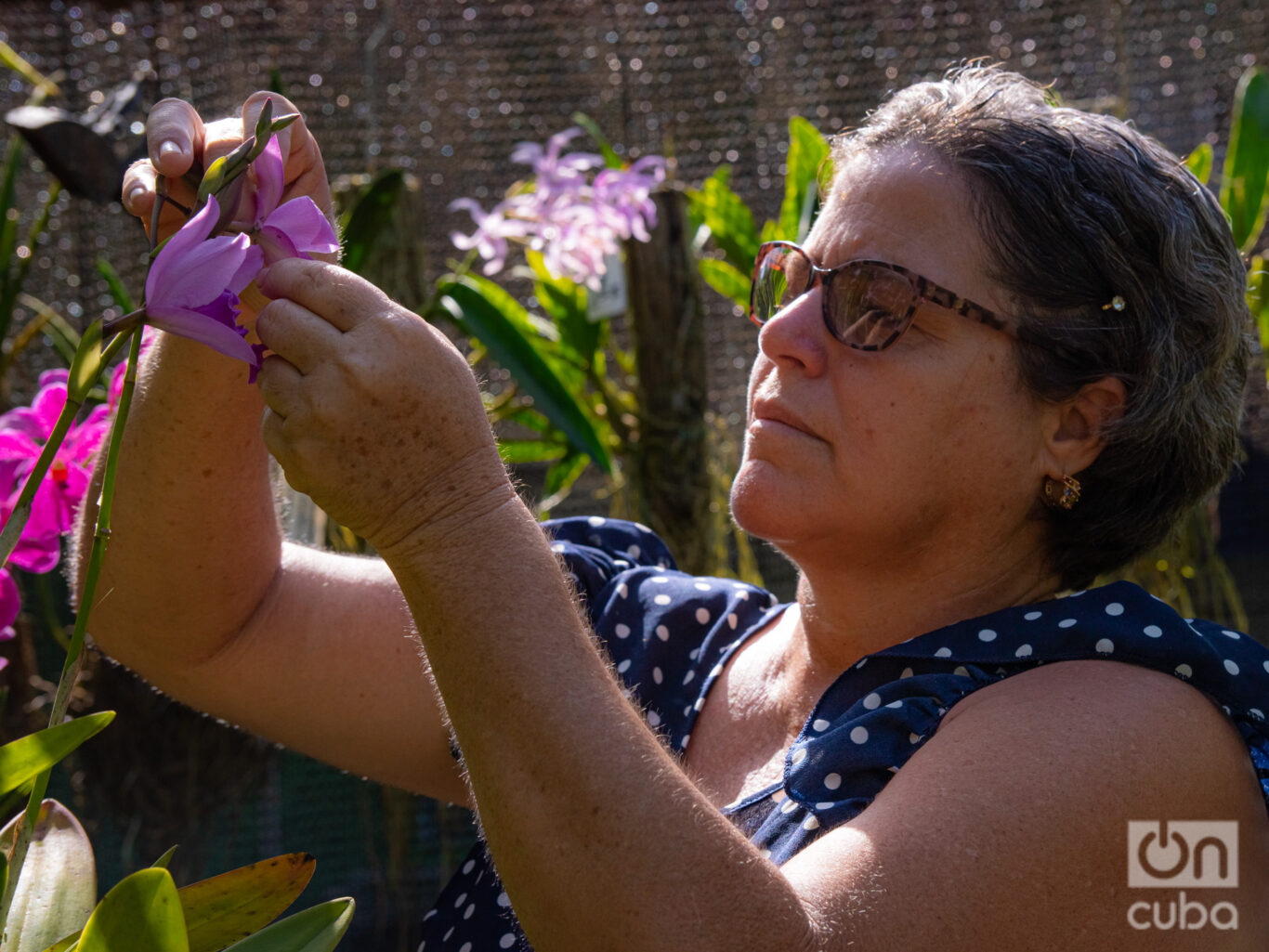
Mildrey is a veterinarian, but above all, she is a lover of plants. Her greatest passion is orchids, and she has a knack for succulents and cacti. She told me how she zealously cared for that hairy cactus that one day mysteriously began to go bald. Neither all the years of research at the Experimental Station nor her international doctorates and postgraduate studies were enough to decipher the cause of the baldness. She had almost given up when, by chance, she saw the hummingbird gently stealing the cactus’s hairs with its long beak. She followed the bird’s flight with her eyes and discovered the nest, made entirely of the cactus’s missing hairs. That’s how mysterious nature is. That’s how things work at the La Luz Agroecological Yard.
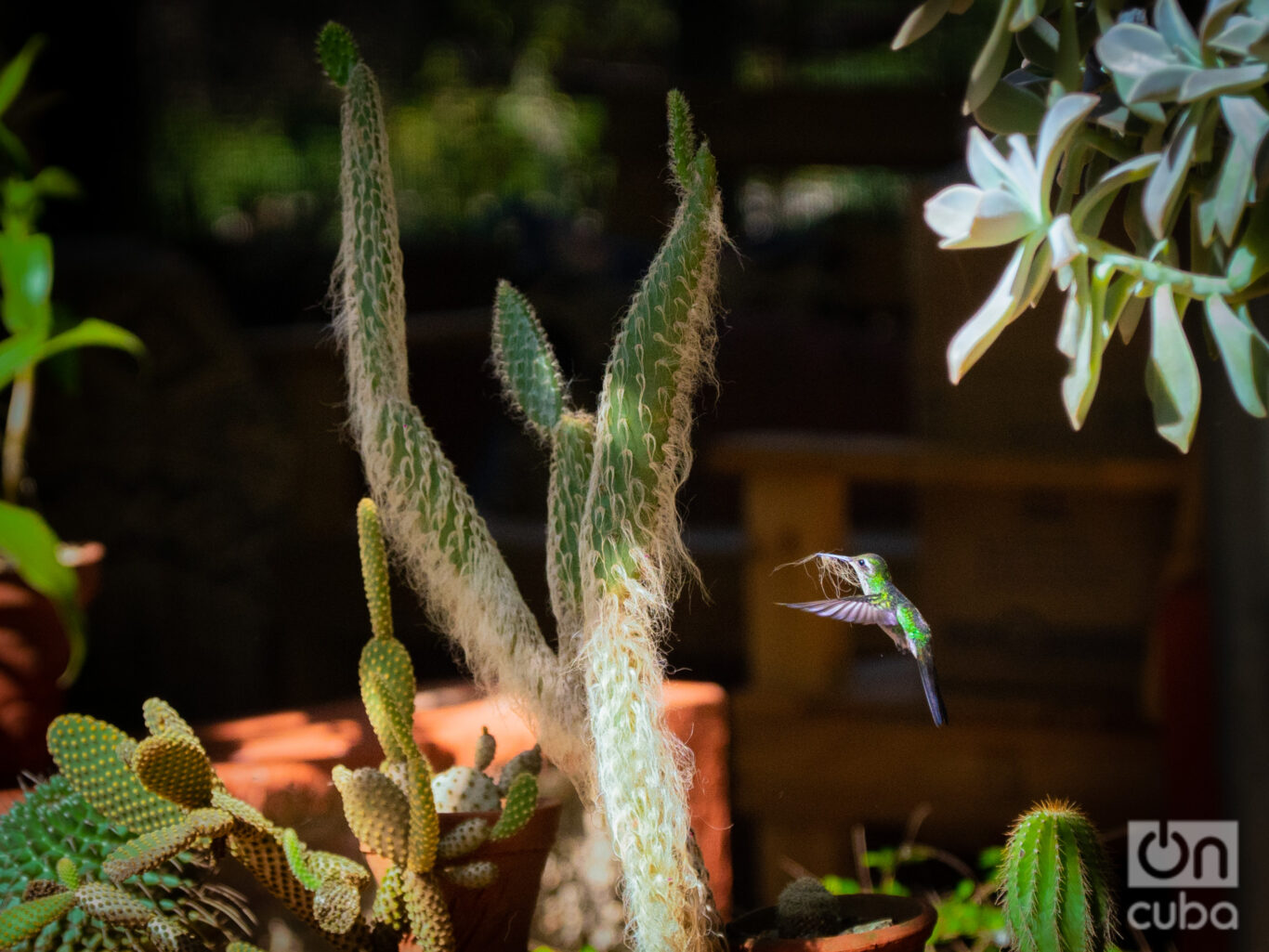
There, the caterpillars of the beetles are called mantecon, because they are fat and white. When they become beetles, they love the light. But while they are mantecones, they eat the roots of the bean plants and play dead to save themselves from predators. Manuel says that people catch them to fish. But they don’t go looking for them there, because they are everywhere. What people do ask them for frequently is a little honey for the sick.
They have 51 hives of Melipona bees or earth bees. They do not have a stinger and produce a liquid honey, more acidic and with a different texture than what we usually see. This honey is super medicinal and cures all flus. The guardian bees close the holes with a kind of cement that looks like an ornament in their little houses and there is always one at the entrance watching that no strangers enter their home. Mildrey and Manuel extract the honey from the hives with syringes with long needles. The procedure is careful and slow. The structures that the bees form inside the hives are very beautiful and they look at them in ecstasy as if they were doing it for the first time. After so many years they continue to be surprised by the natural miracles in their yard.
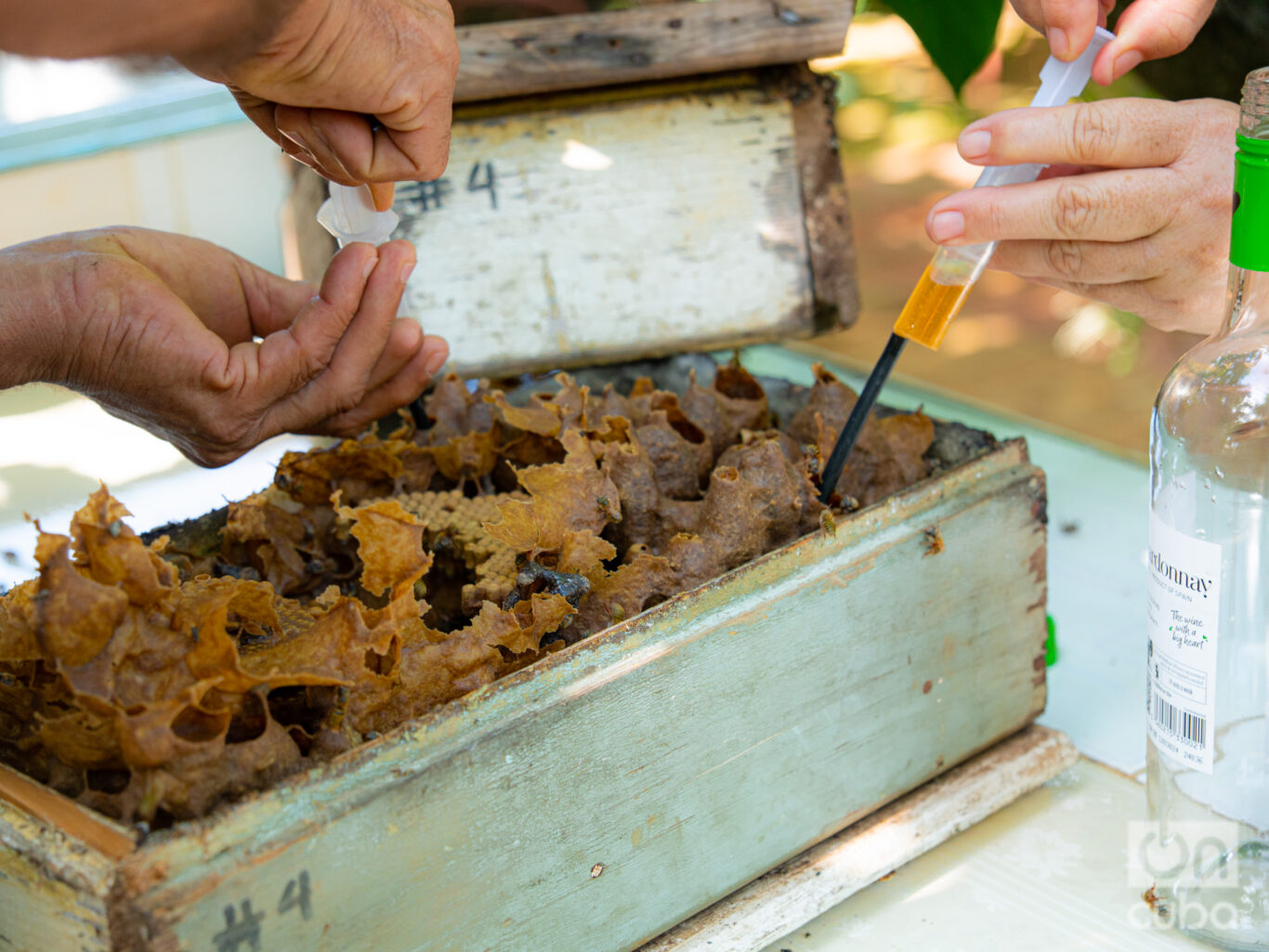
In Mildrey and Manuel’s yard, there are many wonders. There is a corn grinding stone that is more than a hundred years old. There are 18 types of avocados. There is a giant okra. There are two cats and two good dogs. And there are 300 species of orchids.
Inside the orchidarium the climate is different, the smell, the breeze, everything is pure. Mildrey takes care of her orchids every day and, in the effort to make them grow healthy, time stops. Outside is the real world with its disasters. Inside the orchidarium, there is only beauty and life.
For them, living in the countryside is the most beautiful thing. What they have is the fruit of years of work. Everything is planted as they dreamed. Today they enjoy a beautiful and comfortable house. But it took them a lot of time and effort to put up the walls and put down the floor. Little by little they expanded the orchidarium, fixing a little here, a little there.
Both of their children live outside of Cuba. Today they sit at the table and tell their friends about the progress of their children in other parts of the world. Like so many Cuban parents, they celebrate the joy of their children from here and sing happy birthdays from a distance. They miss them, but knowing that they are well comforts them, and here in their yard, they have the satisfaction of drinking coffee that they planted themselves, of eating the beans that the mantecon let grow, and of curing the neighbors’ flu with the honey from their Meliponas.
The first thing they planted were the mamey trees. While they were preparing the planting, Manuel said to Mildrey: “Why do you want to plant that there?” And she answered: “Because one day I am going to sit under that tree.” And so it was. Today they sit in the shade of the mamey tree and love each other even more.
